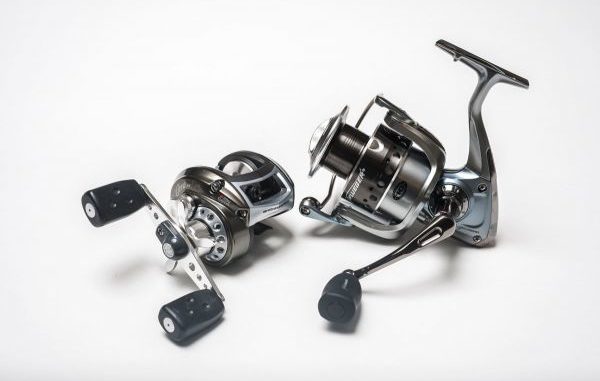
Both reels have pros, cons, guide says
Anybody who’s taken the time to learn to use a baitcaster has spent time cutting out — or stubbornly attempting to untie — a backlash that seemingly defies the laws of physics.
And spinning reels fans have probably grabbed their favorite rod and reel and headed out, only to discover the bail won’t automatically flip back any longer after the cast. Or, worse, a loop develops deep inside the spool.
While anglers might have experience with both baitcasting and spinning reels, they often gravitate to one or the other depending on the fish they’re targeting or the typical conditions they face on a given day.
But is one better than the other?
Capt. Owen “Big O” Langridge with Big O Charters in Venice said both reels have their pros and cons — it’s mostly personal preference and just getting used to a reel that feels comfortable.
“I don’t use anything but a baitcaster, myself,” Langridge said. “Personally, I feel like I have more control of the fish — primarily because I can thumb the spool and control the drag myself, instead of depending on the reel to control the drag.
“There are times when I’ll have a big trout on and I might be fishing up underneath a rig, and I’ve got to get that fish out if I’m going to land him. But if I put too much pressure on him, I know I’m going to pull the hook out of his mouth. It’s just a sixth sense you get— a feel you get with your own thumb — to be able to turn that fish because you know he’s heading toward a piling or down deep to try to break you off.”
Langridge adjusts the drags on his baitcasters accordingly to allow for thumb pressure.
“Even if the drag is set perfectly, he can pull and get hung up in whatever he’s trying to get hung up in. And the same thing goes for big redfish,” he said. “Personally, I normally back off on my star drags on my baitcasters.”
Being able to control the cast is also an advantage he gives to the baitcaster.
“I also have more control of the cast with my thumb,” Langridge said. “In most saltwater applications, you’re not trying to cast to an exact spot. But I fish a lot of shorelines for redfish where I’m throwing a bait or a spinner or a cork up close to the canes but not in the canes.
“I can put it right where I want with the baitcaster.”
But if you’re looking for sheer casting distance, Langridge said a spinning reel is definitely the way to go.
“It’s pretty obvious: When you throw a spinning reel, there’s nothing moving when you let go. The line is just spinning off the spool,” he said. “Whereas on a baitcaster, even though it’s loaded with ball bearings, that spool still has to turn and there’s friction there.
“And you’ve got the possibility of a backlash, so that’s the reason you have a braking system on a baitcaster. You’ve got magnetic and centrifugal brakes working to slow your cast down, so you’re not going to get the distance with a baitcaster that you will with a spinner.”
And for ease of use, whether a young child or someone who’s never fished before, the advantage goes to a spinner — hands-down.
“There’s definitely a learning curve you’ve got with a baitcaster and lots of practice involved, where the learning curve is so much shorter and quicker with a spinner,” he said. “
And besides being much easier to learn to use, spinning reels also have another couple of advantages, he said.
“They can hold a lot more line than a baitcaster,” Langridge said. “I probably put 75 yards of line on a baitcaster, and probably put 125 on the spinner. It holds considerably more line.
“And if you’re after sac-a-lait, and you want to throw very light baits and you don’t want to use a fly rod, you almost have to use an ultra-light spinning reel. It’s just a fact of life.”


